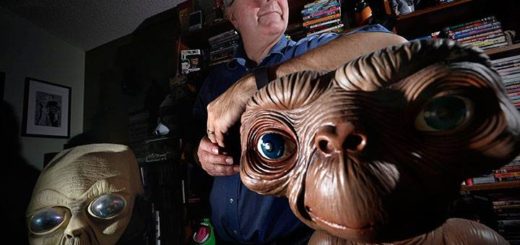Reality Does Not Exist Unless We Are Looking At It And The Future Decides The Past – Quantum Physics Reveals
Famous physicist Niels Bohr once said – “If quantum mechanics hasn’t profoundly shocked you, you haven’t understood it yet.”
This is so true because quantum laws tend to contradict common sense. Quantum experiments constantly show us there is so much we still don’t understand about the world around us. One subject that is truly bizarre, is the nature of what we define as reality.
Quantum experiments have revealed that reality does not exists unless we are looking at it. During the experiment scientists discovered that time went backwards. Cause and effect appear to be reversed. The future caused the past.

Does this make your head spin? Don’t worry, because you are not the only. Scientists are just as astonished as most of us.
Quantum physicists study subatomic particles, which are the essential building blocks of reality. All matter, including ourselves are made up of them. But, the laws governing the tiny microscopic world seem to be different to those dictating how larger objects behave in our own macroscopic reality.
A team of physicist from the Australian National University conducted John Wheeler’s delayed-choice thought experiment, which involves a moving object that is given the choice to act like a particle or a wave. The goal with the Wheeler’s experiment was to determine at which point does a photon decide when to be one or the other?
Common sense says the object is either wave-like or particle-like, independent of how we measure it.
Quantum physics on the other hand predicts that whether you observe wave like behavior (interference) or particle behavior (no interference) depends only on how it is actually measured at the end of its journey.
Instead of using light, researcher decided to apply helium atoms, which are “heavier” than light photons, in the sense that photons have no mass, whereas atoms do.
The results were astonishing. Scientists expected the atom to behave just like light, meaning that it would take on both the form of a particle and/or a wave., but this is not what happened.
The research team trapped a collection of helium atoms in a suspended state known as a Bose-Einstein condensate, and then ejected them until there was only a single atom left.
The single atom was then dropped through a pair of counter-propagating laser beams, which formed a grating pattern that acted as crossroads in the same way a solid grating would scatter light.
A second light grating to recombine the paths was randomly added, which led to constructive or destructive interference as if the atom had travelled both paths. When the second light grating was not added, no interference was observed as if the atom chose only one path.
However, the random number determining whether the grating was added was only generated after the atom had passed through the crossroads.
If one chooses to believe that the atom really did take a particular path or paths then one has to accept that a future measurement is affecting the atom’s past, said Associate Professor Andrew Truscott from the ANU Research School of Physics and Engineering.
“The atoms did not travel from A to B. It was only when they were measured at the end of the journey that their wave-like or particle-like behavior was brought into existence,” Professor Truscott said.
This means that the arrow of time seemed to work in reverse and the future caused the past! “It proves that measurement is everything. At the quantum level, reality does not exist if you are not looking at it,” Professor Truscott explained.



 Creators of mankind
Creators of mankind Description of “Tall white aliens”
Description of “Tall white aliens” Where they came from?
Where they came from? About hostile civilizations
About hostile civilizations The war for the Earth
The war for the Earth “Tall white aliens” about eternal life
“Tall white aliens” about eternal life Video: “Nordic aliens”
Video: “Nordic aliens” Aliens
Aliens Alien encounters
Alien encounters The aliens base
The aliens base UFO
UFO Technology UFO
Technology UFO Underground civilization
Underground civilization Ancient alien artifacts
Ancient alien artifacts Military and UFO
Military and UFO Mysteries and hypotheses
Mysteries and hypotheses Scientific facts
Scientific facts


















